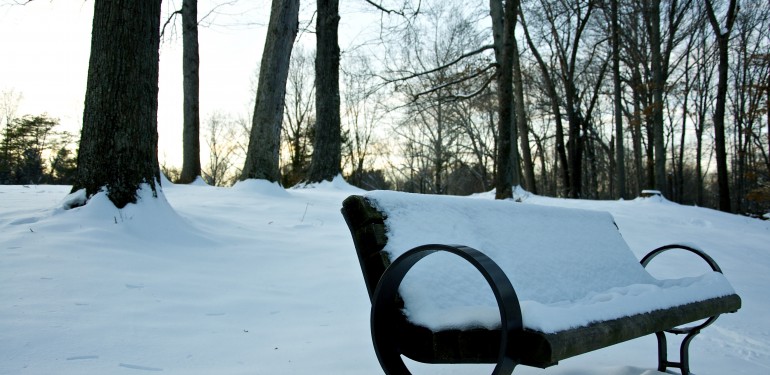This story was originally published in the March 23 print issue.
While Fairfax had a relatively usual winter, the rest of the country had a season out of sync with the norm.
The weather in Fairfax may have seemed more extreme than usual, but multiple Mason environmental science professors and students confirmed the weather was normal for the region.
“While this winter [has been] ‘normal,’ it’s also fair to say that this winter the weather in the U.S. has been ‘unusual’ in the sense that the eastern third of the country has been anomalously cold for an unusually long spell,” said Jim Kinter, a professor of Atmospheric, Oceanic and Earth Sciences. “New England has received more snow this year than ever recorded in a single winter [and] the weather in the U.S. has been more persistently unusual than anywhere else in the Northern Hemisphere.”
Natalie Burls, also a professor of Atmospheric, Oceanic and Earth Sciences, said this unusual weather is due to the polar vortex and the jet stream behaving unusually.
The website Science Hijinks, a joint National Oceanic and Atmospheric Administration and NASA educational website, describes the polar vortex as an area of low pressure—a wide expanse of swirling cold air—that is parked in polar regions. The website says this low-pressure system is almost always in these polar regions, but sometimes, full of cold Arctic air, it can break off and migrate southward, bringing all of that cold air with it. The website also says that the polar vortex has traveled south to areas like Fairfax because the vortex has been weakened.
“As climate change causes the polar ice caps to melt, the polar vortex becomes loosened and is able to travel south towards the eastern United States,” junior Piash Debnath, an Environmental and Sustainability Studies major, said.
Eric Altshuler, a research scientist of Atmospheric, Oceanic and Earth Sciences, described the normal pattern of the jet stream in winter as flowing across the continent in a more or less west-to-east direction. Altshulter then described the unusual jet pattern, which has been occurring the past two winters. He said the jet stream has been entering North America farther to the north of its normal position and exiting farther to the south. This then causes abnormal warmth and dryness west of the Rockies and frequent surges of Arctic air from Canada, resulting in below-normal temperatures over most of the eastern U.S.
Debnath said there are a number of factors that may have contributed to the unusual positions of the polar vortex and the jet stream, but climate change may play a part in it.
“The block of cold air that usually stays trapped near Greenland may have escaped because of the melting of the glaciers and at times during this year and last year, the temperature in the North Pole has been higher than in the eastern United States,” Debnath said. “Overall, the average temperature of the globe is still increasing, but the low and high temperatures of many parts of the world have been drastic, leading to crop failures and economic disasters.”
Kinter said that climate change is usually measured on a much larger scale than just an individual city like Fairfax, but if Fairfax and Mason are affected, it would be due to increasing sea levels.
“The Third National Climate Assessment suggests that sea level rise is a serious threat to coastal and tidewater Virginia, with anticipated increases in sea level that will negatively impact coastal infrastructure, fisheries and transportation,” Kinter said.
In terms of what Fairfax winter temperatures will be like in the future, Burls said that it is hard to predict regional temperatures, but Fairfax will likely continue to see these extremely cold temperatures during some winters due to natural variability in the jet stream and the polar vortex. Burls continued that the only “unusual” aspect of this weather is that it occurs infrequently; whether or not climate change will result in any changes in the frequency or intensity of these events is a topic of ongoing scientific research.
Photo Credit: Johannah Tubalado




